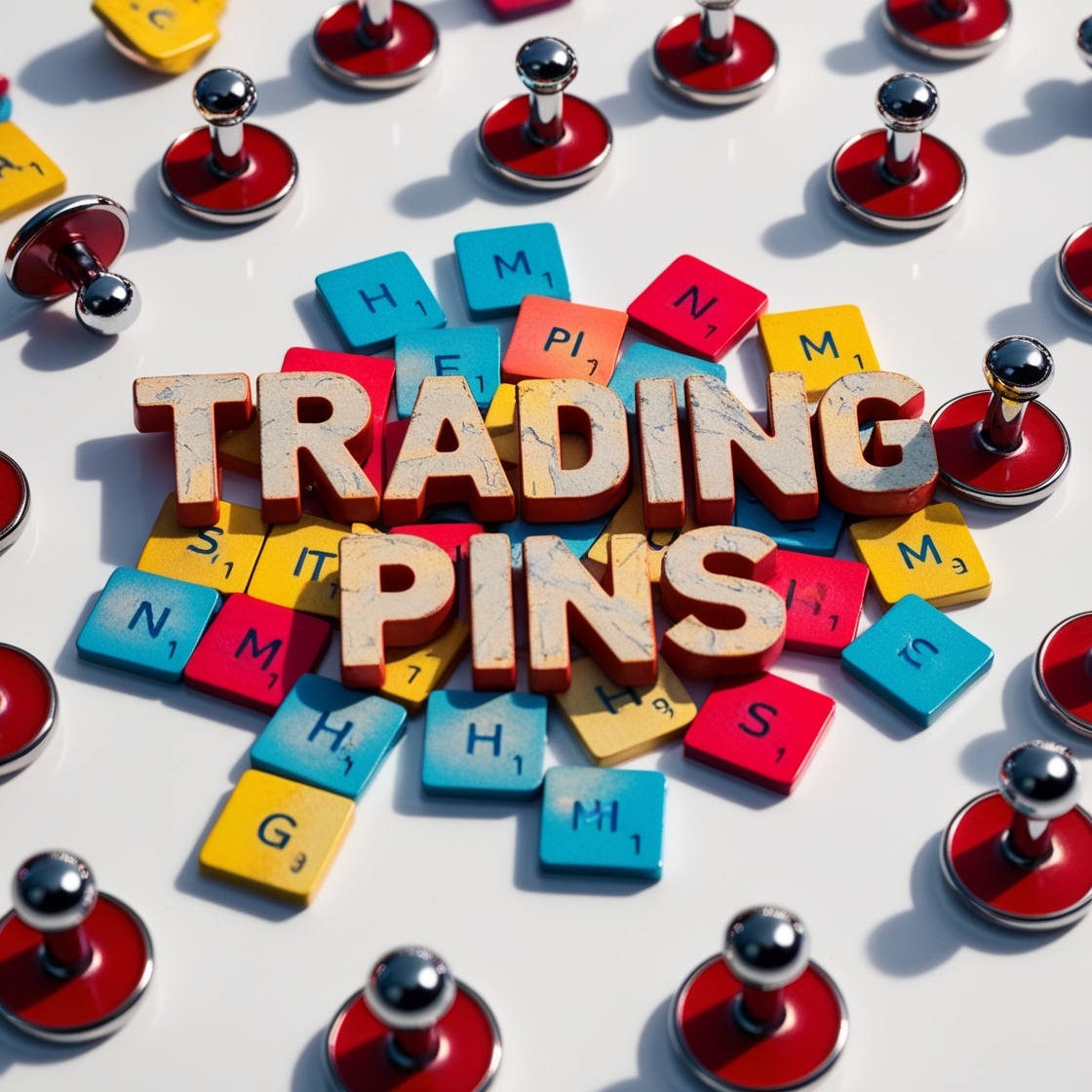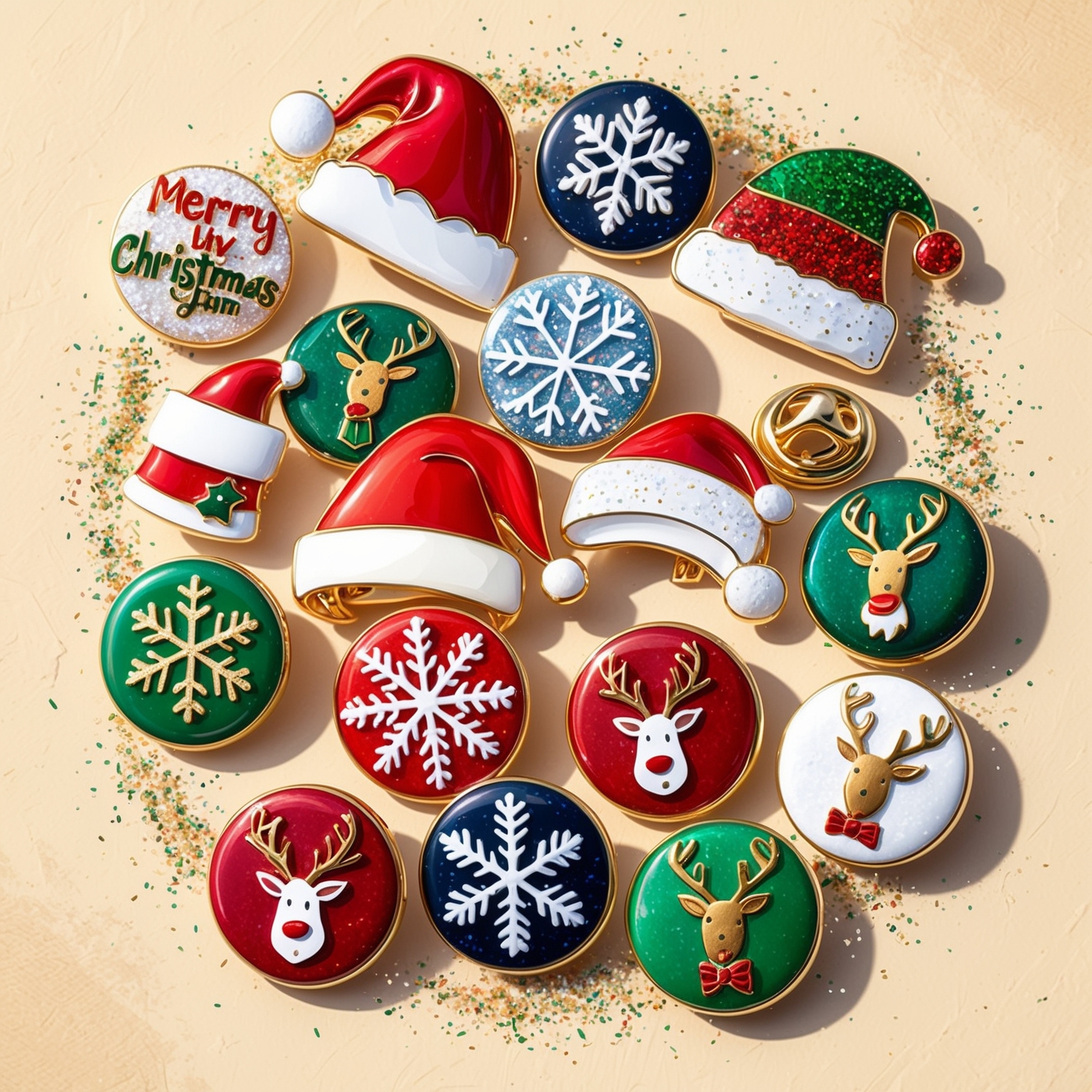Custom trading pins have become a beloved collectible, cherished for their unique designs, vibrant colors, and the sense of community they foster among enthusiasts. From Little League baseball teams to major conventions, trading pins serve as tangible memories and symbols of participation and achievement. This article delves into the diverse world of custom trading pins, exploring different types, their creation process, and their significance in various contexts. We’ll guide you through everything you need to know about these captivating collectibles.
The Fascination with Trading Pins
The History of Trading Pins
Trading pins have a rich history, beginning in the early 20th century. They started as simple symbols of team affiliation and event participation but have evolved into intricate collectibles.
- Early Origins: Trading pins originated in the sports world, particularly in baseball, where teams would exchange pins as a sign of goodwill and sportsmanship.
- Olympic Influence: The tradition gained significant traction during the Olympic Games, where athletes, officials, and spectators traded pins, fostering international camaraderie and friendship.
- Expansion to Various Events: Today, trading pins are popular in a variety of settings, from sports tournaments and theme parks to corporate events and conventions.
Why Collect Trading Pins?
The appeal of trading pins lies in their ability to capture memories, build connections, and showcase creativity.
- Nostalgia: Each pin represents a specific event, team, or achievement, making them sentimental keepsakes.
- Community: Trading pins foster a sense of belonging and community among collectors, encouraging social interaction and networking.
- Artistic Expression: The detailed and colorful designs of trading pins make them miniature works of art, appealing to collectors with an eye for design.
Types of Custom Trading Pins
Enamel Trading Pins
Enamel pins are a popular choice for their durability, vibrant colors, and detailed designs. There are two main types of enamel pins: hard enamel and soft enamel.
Hard Enamel Pins
Hard enamel pins, also known as cloisonné pins, are known for their smooth, polished finish and long-lasting durability.
- Creation Process: Hard enamel pins are made by filling recessed areas of a metal pin with enamel paint. Each color is added separately and baked at high temperatures to harden. The pin is then polished to create a smooth surface.
- Design Features: These pins have a high-quality, jewelry-like appearance, making them ideal for detailed and intricate designs.
- Durability: Hard enamel pins are highly resistant to scratches and wear, making them suitable for long-term use and display.
Soft Enamel Pins
Soft enamel pins are characterized by their textured surface, where the enamel paint sits below the metal lines, creating a raised, tactile feel.
- Creation Process: Soft enamel pins are made by filling the recessed areas of a metal pin with enamel paint. Unlike hard enamel pins, the paint is not polished flush with the metal lines, resulting in a textured finish.
- Design Features: Soft enamel pins offer vibrant colors and intricate details, with the added appeal of a tactile texture. They are often used for bold and creative designs.
- Cost-Effectiveness: Soft enamel pins are generally more affordable than hard enamel pins, making them a popular choice for larger orders and promotional events.
Die-Struck Pins
Die-struck pins are made without the use of enamel paint, relying solely on the metal’s texture and finish to create a design.
- Creation Process: A custom die is used to strike the design into a metal sheet. The pin is then polished and plated to achieve the desired finish.
- Design Features: Die-struck pins have a classic, elegant look, often featuring intricate details and high-relief designs. They can be finished with various plating options, including gold, silver, and antique finishes.
- Versatility: These pins are ideal for creating a sophisticated and timeless look, making them popular for corporate events, awards, and recognition.
Printed Pins
Printed pins use a digital printing process to apply the design directly onto the metal surface, allowing for highly detailed and colorful images.
- Creation Process: The design is digitally printed onto the pin’s surface and then coated with an epoxy layer to protect the image and add durability.
- Design Features: Printed pins can reproduce complex images, gradients, and photographs with high accuracy, making them ideal for detailed and colorful designs.
- Quick Turnaround: The printing process is faster than traditional enamel or die-struck methods, making printed pins a great option for tight deadlines and large orders.
3D Cast Pins
3D cast pins offer a unique, three-dimensional look, with raised and recessed areas creating depth and dimension.
- Creation Process: A mold is created based on the 3D design, and molten metal is poured into the mold to form the pin. The pin is then polished and plated to achieve the desired finish.
- Design Features: These pins have a sculptural quality, with intricate details and a tactile feel. They are ideal for creating realistic and detailed designs.
- Durability: 3D cast pins are highly durable and can withstand wear and tear, making them suitable for various applications.
The Creation Process of Custom Trading Pins
Designing Your Pin
The first step in creating custom trading pins is designing a unique and eye-catching pin that represents your team, event, or organization.
- Concept Development: Start with a clear concept that captures the essence of what you want to represent. Consider elements like logos, mascots, colors, and text.
- Sketching and Drafting: Create initial sketches and drafts of your design. Focus on the layout, details, and overall aesthetics.
- Digital Design: Use graphic design software to create a digital version of your pin. This allows for precise adjustments and refinements to the design.
Choosing Materials and Manufacturing Techniques
Selecting the right materials and manufacturing techniques is crucial for achieving the desired look and quality of your pins.
- Material Selection: Choose the appropriate metal for your pins, such as brass, copper, or zinc alloy. Consider factors like durability, finish, and cost.
- Manufacturing Techniques: Decide on the type of pin (e.g., hard enamel, soft enamel, die-struck) and the specific manufacturing techniques that best suit your design.
Production and Quality Control
Once the design and materials are finalized, the production process begins. Ensuring quality control throughout production is essential for creating high-quality pins.
- Die Creation: A custom die is created based on the design, which will be used to stamp or cast the pins.
- Pin Production: The pins are produced using the chosen manufacturing techniques. This includes filling with enamel, printing, or casting the design.
- Quality Control: Each pin undergoes a thorough quality control process to check for defects, ensure color accuracy, and verify that all details are correct.
Finishing and Packaging
The final steps in the creation process involve finishing and packaging the pins.
- Plating and Polishing: The pins are plated with the desired finish (e.g., gold, silver, antique) and polished to achieve a smooth, high-quality appearance.
- Attachment Options: Attachments such as butterfly clutches, magnetic clasps, or safety pins are added to the back of the pins.
- Packaging: The pins are packaged for delivery, often in protective packaging to prevent damage during shipping.
The Significance of Trading Pins in Various Contexts
Sports Teams and Events
Trading pins play a significant role in sports, serving as symbols of team spirit, participation, and achievement.
- Team Identity: Custom trading pins help build team identity and pride, often featuring team logos, colors, and mascots.
- Event Commemoration: Pins created for specific tournaments and events serve as mementos of participation and victories. They are cherished souvenirs for players and fans alike.
- Trading Culture: The practice of trading pins at sports events fosters camaraderie and interaction among players, coaches, and supporters.
Conventions and Expos
At conventions and expos, trading pins are popular collectibles that enhance the attendee experience.
- Event Branding: Custom pins designed for conventions often feature event logos, themes, and special artwork, serving as memorable souvenirs.
- Networking and Interaction: Trading pins encourage attendees to interact and network, creating opportunities for connection and community building.
- Exclusive Collectibles: Limited edition and exclusive pins add an element of excitement and rarity, attracting collectors and enthusiasts.
Corporate and Promotional Uses
Companies use custom trading pins as promotional items, giveaways, and branding tools.
- Brand Promotion: Custom pins featuring company logos and branding elements help promote brand identity and visibility.
- Employee Recognition: Pins can be used to recognize employee achievements, milestones, and contributions, fostering a sense of pride and motivation.
- Event Giveaways: Companies often distribute custom pins at trade shows, conferences, and promotional events as unique and memorable giveaways.
Educational and Nonprofit Organizations
Educational institutions and nonprofit organizations use trading pins to promote their missions and engage with their communities.
- Fundraising: Custom pins can be sold as part of fundraising efforts, generating revenue to support organizational goals.
- Awareness Campaigns: Pins featuring messages and symbols related to specific causes help raise awareness and support for important issues.
- Student and Volunteer Recognition: Educational institutions and nonprofits use pins to recognize the achievements and contributions of students and volunteers.
Collecting and Trading Custom Trading Pins
Building Your Collection
Starting and building a trading pin collection involves passion, strategy, and a bit of luck.
- Set Goals: Determine what you want to focus on in your collection, such as specific sports, events, teams, or themes.
- Research and Identify: Research different types of trading pins, their history, and their value. Identify key pins that you want to add to your collection.
- Network with Collectors: Join collector communities, attend events, and connect with other collectors to trade and acquire new pins.
Trading and Networking
Trading pins is not just about acquiring new items; it’s also about building connections and fostering community.
- Trading Events: Participate in trading events, conventions, and meetups where collectors come together to trade and share their collections.
- Online Platforms: Use online platforms and social media groups dedicated to trading pins to connect with collectors from around the world.
- Etiquette and Tips: Practice good trading etiquette, such as being respectful, fair, and honest in your trades. Always verify the authenticity and condition of pins before trading.
Preserving and Displaying Your Collection
Proper preservation and display of your trading pin collection are essential for maintaining their condition and showcasing their beauty.
- Storage Solutions: Use storage solutions like pin albums, display cases, and storage boxes to organize and protect your pins.
- Display Options: Create attractive displays using shadow boxes, framed corkboards, or custom display stands to showcase your collection.
- Care and Maintenance: Regularly clean and inspect your pins to prevent tarnish and damage. Use appropriate cleaning methods and avoid exposure to moisture and direct sunlight.
The Future of Custom Trading Pins
Technological Advancements
Technological advancements are shaping the future of custom trading pins, offering new possibilities for design and interaction.
- Digital Design Tools: Advanced design software enables more intricate and precise pin designs, allowing for greater creativity and customization.
- Smart Pins: Integration of technology, such as NFC chips or QR codes, adds interactive and digital elements to pins, enhancing their functionality and engagement.
Sustainability and Ethical Production
Sustainability and ethical considerations are becoming increasingly important in the production of custom trading pins.
- Eco-Friendly Materials: Using recycled or biodegradable materials in pin production supports environmental sustainability.
- Fair Trade Practices: Ensuring fair labor practices and ethical sourcing aligns with broader social responsibility goals.
Expanding Traditions and Innovations
The traditions and innovations associated with custom trading pins will continue to evolve, reflecting changing cultural and social dynamics.
New Applications for Trading Pins
The use of trading pins is expanding into new and innovative areas, enhancing their appeal and functionality.
- Virtual Events: With the rise of virtual events and conferences, trading pins are being adapted for digital use. Virtual trading platforms allow collectors to exchange digital versions of their pins, adding a modern twist to traditional pin trading.
- Augmented Reality (AR) Pins: Some companies are incorporating AR technology into trading pins, creating interactive experiences. By scanning the pin with a smartphone, users can access additional content such as videos, animations, or exclusive offers.
- Hybrid Events: Combining physical and digital elements, hybrid events use trading pins as both physical collectibles and digital tokens. This approach bridges the gap between in-person and virtual attendees, enhancing the overall event experience.
Sustainability and Ethical Production
As sustainability and ethical considerations become more prominent, the production of custom trading pins is adopting more sustainable and ethical practices.
- Eco-Friendly Materials: Using recycled or biodegradable materials in pin production supports environmental sustainability. Eco-friendly options include using recycled metals, biodegradable plastics, and sustainable packaging.
- Fair Trade Practices: Ensuring fair labor practices and ethical sourcing in the production process aligns with broader social responsibility goals. Ethical production practices enhance the value and appeal of the pins and contribute to a positive brand image.
- Green Manufacturing: Implementing green manufacturing processes, such as reducing waste, conserving energy, and minimizing the use of harmful chemicals, further supports environmental sustainability. These practices help create a more sustainable and responsible pin production industry.
Cultural Integration
As global cultures interact and merge, trading pins continue to serve as symbols of unity, diversity, and shared experiences.
- Cross-Cultural Designs: Trading pins often incorporate elements from different cultures, reflecting the diversity of participants and fostering a sense of global community. Cross-cultural designs celebrate inclusivity and promote cultural understanding.
- International Events: Trading pins are popular at international events, such as the Olympics, World Expos, and global sports tournaments. These events provide opportunities for cultural exchange and showcase the universal appeal of trading pins.
- Cultural Celebrations: Pins designed for cultural celebrations and festivals highlight the richness and diversity of global traditions. Collectors can explore a wide range of cultural themes and designs, enhancing their appreciation for different cultures.
The Future of Custom Trading Pins
The future of custom trading pins looks bright, with continued innovations and expanding applications ensuring their enduring popularity.
Technological Advancements
Technological advancements will continue to shape the future of trading pins, enhancing their design, production, and functionality.
- 3D Printing: Advances in 3D printing technology allow for more intricate and detailed pin designs. This technology enables rapid prototyping and customization, making it easier to produce unique and complex pins.
- Smart Pins: Integration of smart technology, such as NFC chips or QR codes, can add interactive and digital elements to pins. Smart pins can provide access to exclusive content, event information, or special offers, enhancing their functionality and engagement.
- Digital Design Tools: Advanced digital design tools and software will enable more precise and creative pin designs. These tools allow designers to experiment with new techniques and push the boundaries of pin artistry.
Expanding Markets and Applications
The market for custom trading pins is expanding, with new applications and opportunities emerging across various sectors.
- Corporate Branding: Companies are increasingly using custom trading pins as part of their branding and marketing strategies. Pins serve as unique promotional items, employee recognition tokens, and corporate gifts, helping to strengthen brand identity and loyalty.
- Entertainment and Media: Trading pins are popular in the entertainment and media industries, with pins designed for movies, TV shows, video games, and music events. These pins serve as collectible merchandise and promotional items, enhancing fan engagement.
- Educational Institutions: Schools and universities are adopting trading pins for student recognition, fundraising, and alumni engagement. Custom pins can commemorate academic achievements, special events, and school spirit, fostering a sense of community and pride.
Sustainability and Ethical Production
Sustainability and ethical production will remain key considerations in the future of trading pins.
- Eco-Friendly Practices: The adoption of eco-friendly materials and green manufacturing processes will continue to grow. Collectors and consumers increasingly value sustainability, driving demand for environmentally responsible products.
- Ethical Sourcing: Ensuring fair labor practices and ethical sourcing will become standard practice in the pin production industry. Transparency and accountability in the supply chain will be essential for building trust and credibility with consumers.
- Social Responsibility: Companies and organizations will prioritize social responsibility in their pin production and marketing efforts. Initiatives that support environmental conservation, social justice, and community development will enhance the appeal and impact of trading pins.
Conclusion
The world of custom trading pins is vibrant and diverse, offering endless possibilities for creativity, connection, and celebration. From their historical origins to their modern applications, trading pins have become cherished collectibles that capture the essence of events, teams, and achievements.
As we explore the different types of trading pins, such as hard enamel, soft enamel, die-struck, printed, and 3D cast pins, we gain a deeper appreciation for the artistry and craftsmanship involved in their creation. Each pin tells a unique story and serves as a tangible reminder of memorable experiences and shared moments.
The significance of trading pins extends beyond their aesthetic appeal, fostering community, building connections, and promoting cultural exchange. Whether used in sports, conventions, corporate settings, or educational institutions, trading pins bring people together and celebrate the diversity of human experiences.
Looking to the future, technological advancements, sustainability, and cultural integration will continue to shape the evolution of trading pins. These small but powerful symbols will remain cherished items, celebrating achievements, fostering connections, and capturing the essence of our shared experiences.
If you are interested in ordering some high-quality lapel pins, feel free to call us at our Toll free number 1-877-513-4811 or fill out one of our FREE QUOTE FORMS.



